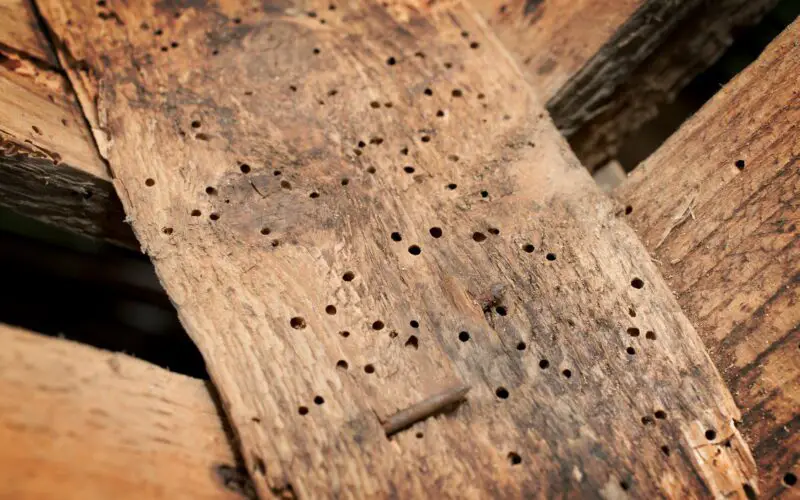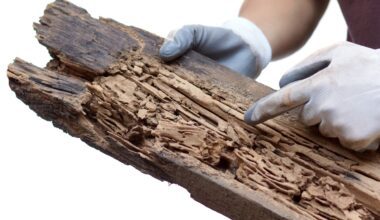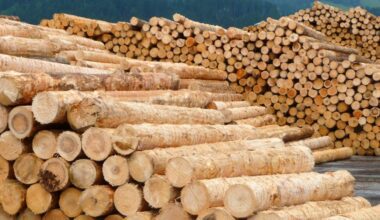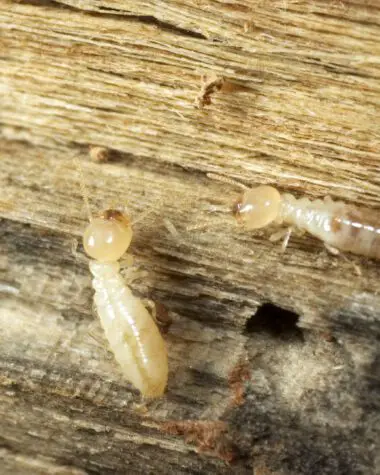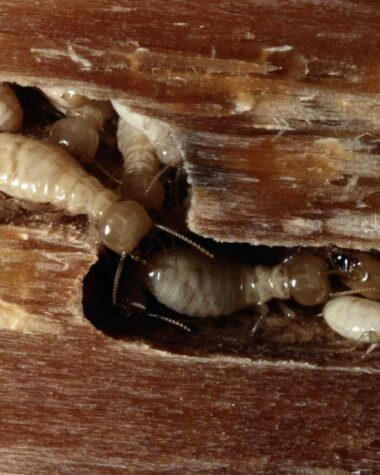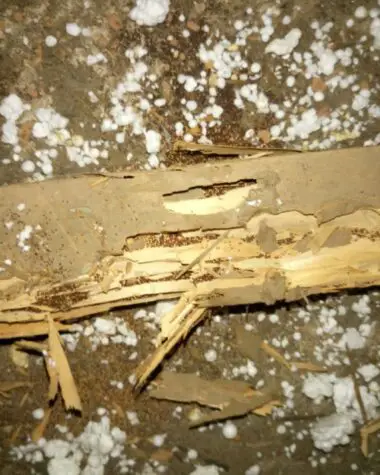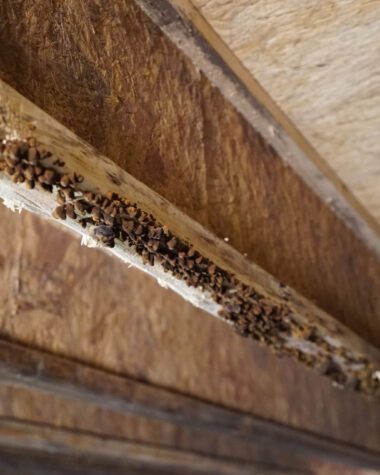Wood-boring insects or woodworms are a menace to all kinds of wooden things in and around the house. From hardwood to bamboo, these insects can damage all kinds of wood if not treated at the earliest.
If you are looking for ways to remove wood borer from your roof, wooden furniture, fence, or barn wood, this article will help you. Firstly, you need to know the types, signs, and some basic facts about these insects that make their home and breed inside the wood.
After identifying and confirming the presence of wood borers, you can follow the step-by-step guide and apply the best solutions.
What are the Signs of Wood Borer Infestation?
Once wood borers make a nest inside a particular wooden plank or a piece, they act fast, and so should you! With all kinds of wood borers, acting as quickly as possible is vital. For that, you should first identify what kind of insects have made their way into the timber.
Recognizing the wood borer correctly helps eliminate them with the right treatment and methods to permanently solve your infestation problems.
Wood-boring beetles are one of the most common wood borers that damage the wood. Their larvae are called woodworms. Most of the damage in structures is caused by these larvae that dig inside the wood to make a nest or shelter until they hatch.
The easy-to-spot signs of wood-boring beetles are:
- Tiny round exit holes (Boreholes)
- Powdery dust (Bore dust)
- Crumbly and weak edges on floorboards and joists
- Narrow tunnels inside the timber
- Weak and crumbly wood prone to breaking
- Beetles surfacing from wood or dead beetles on the floor
What Do Wood Borers Look Like?
Wood-damaging insects or wood-boring beetles are of several kinds. However, the larvae of these insects look quite similar. They are creamy white, wriggly, soft-bodied insects with curved bodies. It is quite unlikely you will spot these larvae as they remain inside and do not crawl out from the wood.
The adult wood boring beetles look different; most species are usually three to four millimeters long. The larvae munch away on the wood. Most wood-boring insects nest inside wood with fairly high moisture content.
Most frequently spotted in homes are the brown-winged beetles. The adult version of these common furniture beetles invades and damages furniture, wooden pillars, and structural supports.
Some of the most common wood-boring beetles are:
Ways of treating wood affected by wood borers
There are several answers to the question of how to eliminate wood borers. Wood-boring insects are attracted to wood that has a higher moisture content. One of the ways of deterring woodworms is to keep the wood dry.
Other ways include sealing the cracks and crevices on furniture and the boreholes created by the worms. This will stop them from entering and nesting. Without a sealant, the newly hatched larvae may also find it easier to bore through the wood grain.
Wood that’s unprotected and lacks lacquer, varnish, or any kind of protective finish is more prone to be infested by wood-boring insects. Unfinished, raw wood has more moisture content and is usually rough and kinked. This makes it easy to penetrate, nest, and lay eggs for the insects.
Another way of prevention is keeping borer-infested wood away from the house. If your wood piece is severely damaged and cannot be restored, it is best to dispose of and replace it.
As said earlier, it is important to act fast when you suspect or notice any signs of wood borer infestation. If you wait for too long, the damage may be beyond repair. If the woodworms have only affected the upper wood without penetrating the interior, it’s a good sign that your wood may be restored.
With all that being said, here are the steps to follow when eliminating wood borer infestation.
Heat Treatment
This simple way of applying heat to the wood or furniture can dry, drive out, or kill the woodworms. For smaller furniture and decorative items, you can use the oven. For larger pieces of wood, use a space heater to apply heat. Set the heat at around 140℉ and keep it for about 24 hours to kill the eggs and the larvae.
However, be extremely careful not to burn the wood or the upholstery. Check from time to time and act as suitable for the particular piece of furniture. Once the moisture is gone from the wood and the eggs are dead, the woodworm infestation problem will be solved automatically.
Chemical Treatment
Remember that chemical treatment requires proper handling of toxic substances. Ensure you wear protective gear and use the proper tools to get the job done. Here are the things you need:
- Gloves
- Goggles
- Face mask
- Spray bottle/garden sprayer
Step 1
Wear protective gloves, a mask, or a respirator, and cover your eyes with goggles, so you do not inhale or directly touch the chemicals. The best place to treat infested wood with chemicals is outdoors or in a well-ventilated place. Cover the ground underneath the wood as well.
Step 2
Use boron-based borax powder or mix concentrated boron powder with water while following instructions from the manufacturer. Keep the ratio as directed to get the best results. This treatment works best on bare wood.
Keep the chemical away from the reach of pets and children. Make a solution depending on the size of the wood item to be treated. The powder can be readily mixed with water to adjust the concentration.
Step 3
Spray the solution with a garden sprayer or spray bottle, apply two coats with a paintbrush, or dip the wood. Make sure to cover the entire furniture with an even coat. Apply the solution with a paintbrush on the joints and difficult-to-reach areas. Let it dry.
Take The Help of Specialists
Knowing how to get rid of wood borers and actually doing it are two different things. Using a DIY method to eliminate wood-damaging insects is not always possible. In that case, you can research and contact a reliable exterminator.
Professional and certified exterminators have the knowledge and proper equipment to deal with various situations. They may fumigate, apply strong pesticides, and freeze the furniture for weeks in walk-in freezers as required.
Conclusion
Now that you are aware of the different choices in eliminating wood borers, you can easily control the level of infestation. Consider the size of the furniture or wood, and take appropriate steps to solve your pest problems. You can use natural, chemical, and even professional treatment.
But why would you stress dealing with these pests if you can completely avoid them? You can find useful tips for preventing wood infestation by following simple guides. You can also study more about wood infestation and its causative factors.
By doing so, you can ensure a safe and pest-free home. This can even cost less instead of using expensive treatment against wood pests.
